In modern agriculture, plastic seedling trays are gradually replacing traditional grow bags thanks to their smart design and ability to support uniform, healthy plant development. This article will help you understand what plastic seedling trays are, how they are structured, their specific benefits in the seedling stage, and how to use them effectively for different crops.
1. What Are Plastic Seedling Trays?
Plastic seedling trays are containers made of PP or PE plastic, designed with multiple evenly spaced cells used for sowing seeds and nurturing young plants in the early stages of growth. Each cell functions as a mini pot, allowing seedlings to develop independent root systems, making transplanting easier and reducing root damage during handling.
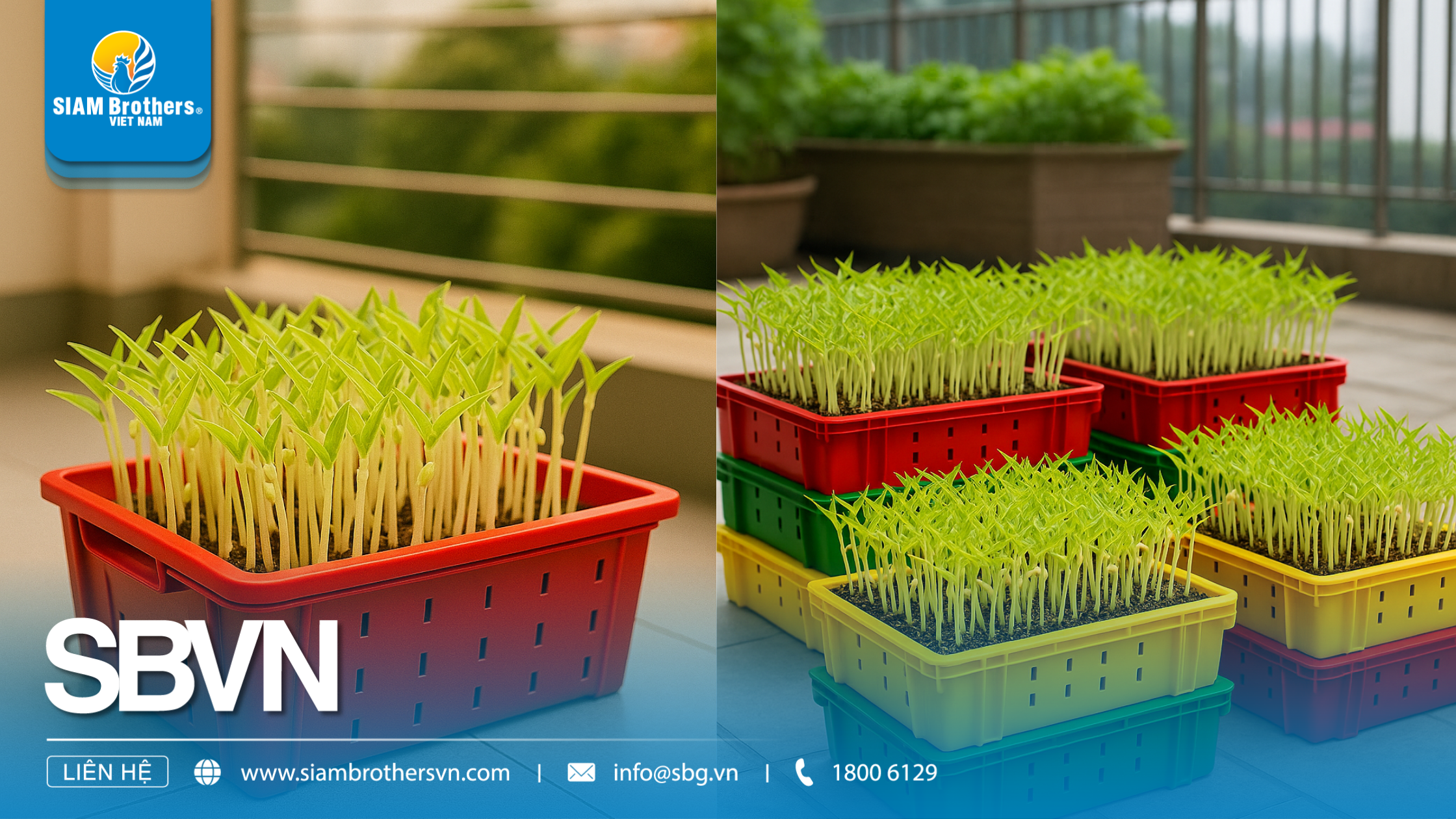
Why Should You Use Plastic Seedling Trays in Agriculture?
- Optimize the seedling process: The trays support even germination, consistent growth, and easier control of moisture and nutrients.
- Save space and reduce labor: Smart cell arrangement allows for maximum space usage while maintaining optimal spacing between seedlings.
- Durable and reusable: Made from high-quality plastic, trays are resistant to deformation and can be reused for multiple growing cycles.
- Easy to transport and manage: Ideal for professional nurseries, high-tech farming models, and even home-based seedling operations.
Common Applications of Plastic Seedling Trays
- Growing leafy greens: mustard greens, lettuce, water spinach, amaranth, etc.
- Propagating fruit trees: guava, orange, pomelo, jackfruit, etc.
- Cultivating industrial crops: coffee, pepper, cashew, etc.
- Starting ornamental plants and bonsai in the early growth stage
2. Basic Structure of Plastic Seedling Trays
2.1 Durable Materials – Safe for Plants
- Most plastic seedling trays are made from virgin PP or PE plastic – materials that are safe, non-toxic, and do not affect soil or root health.
- Cheaper options made from recycled plastic may have lower durability and reusability.
2.2 Multi-Cell Design – Flexible and Space-Saving
- Each tray consists of evenly distributed cells that function as individual mini pots.
- Cell counts vary (32, 50, 72, 104, 128, 200, etc.), allowing growers to choose according to crop type and sowing density.
- Cell spacing and diameter are optimized for moisture retention, drainage, and preventing root rot.
2.3 Smart Drainage with Tapered or Round Cell Bottoms
- Each cell features a tapered or rounded base to help concentrate root growth and make transplanting easier.
- Integrated drainage holes or ventilation grooves promote air circulation and prevent fungal diseases – a common issue in traditional growing containers.
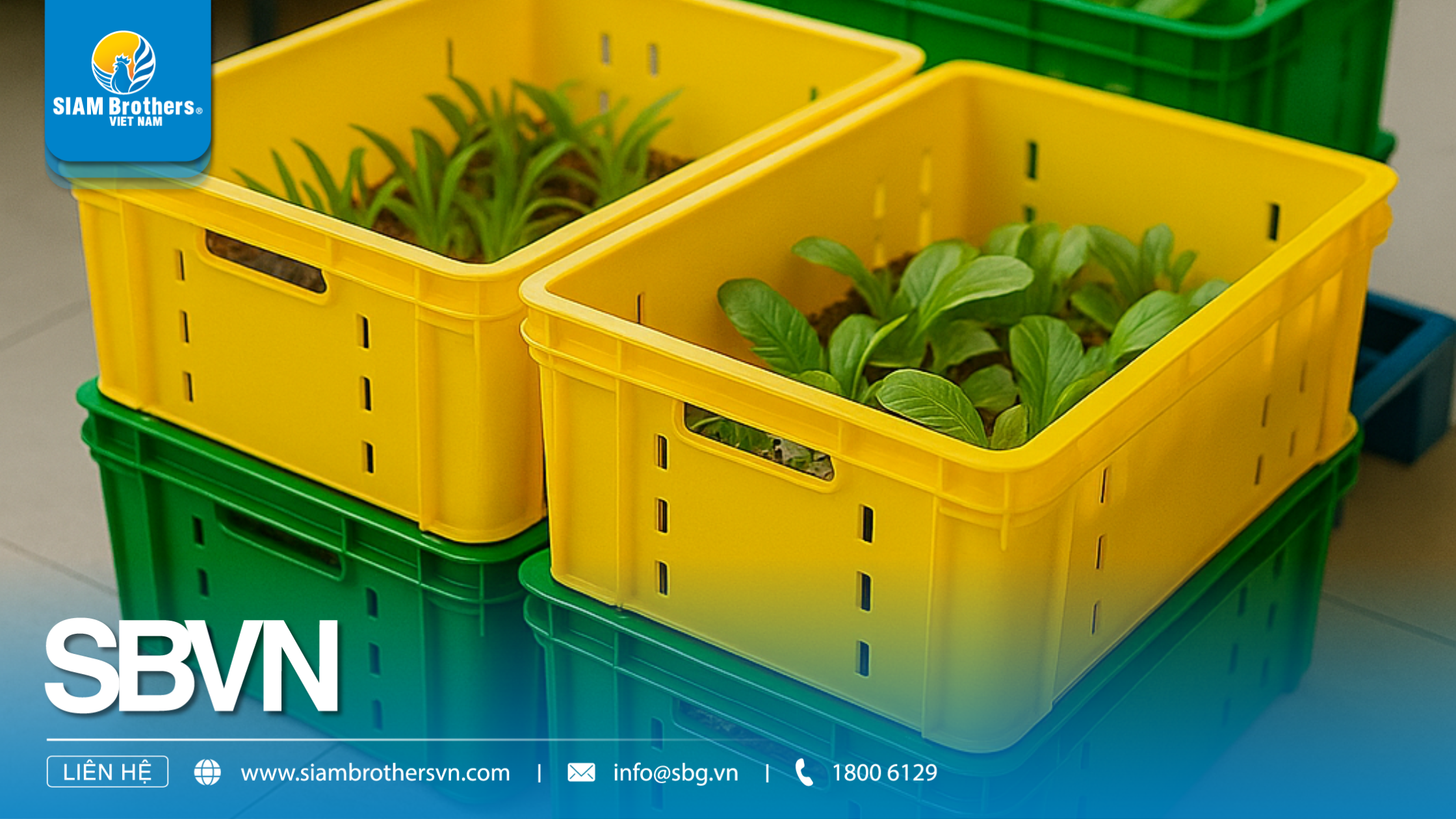
2.4 Solid One-Piece Construction – Easy to Clean and Reuse
- Molded as a single piece for high strength, the trays resist cracking during transport and repeated use.
- Smooth surfaces allow for quick and easy cleaning after each growing cycle – a major advantage over grow bags or foam trays.
2.5 Standard Sizes – Ideal for Professional Nurseries
- Common sizes include 28×54 cm, 30×60 cm, and 36×72 cm depending on the model.
- Easy to stack, move with carts, or store on racks – making them ideal for commercial nurseries and high-tech farming environments.
3. Key Benefits of Plastic Seedling Trays
- Each cell in the tray acts as an independent “mini home” for the seed, allowing it to grow without competing for nutrients.
- This setup minimizes environmental impacts and ensures more uniform germination and seedling development compared to direct soil sowing.
3.2 Effective Water and Nutrient Control
- Plastic seedling trays allow growers to easily regulate water and fertilizer levels throughout each growth stage.
- Well-designed drainage holes prevent root rot and uneven moisture retention—common causes of seedling death.
3.3 Space-Saving, Labor-Saving, and Cost-Efficient
- Thanks to stackable designs, one tray can accommodate hundreds to thousands of seedlings in a compact space.
- Trays reduce the time and labor required versus traditional sowing methods.
- Reusable across multiple growing seasons, they help cut long-term agricultural input costs.
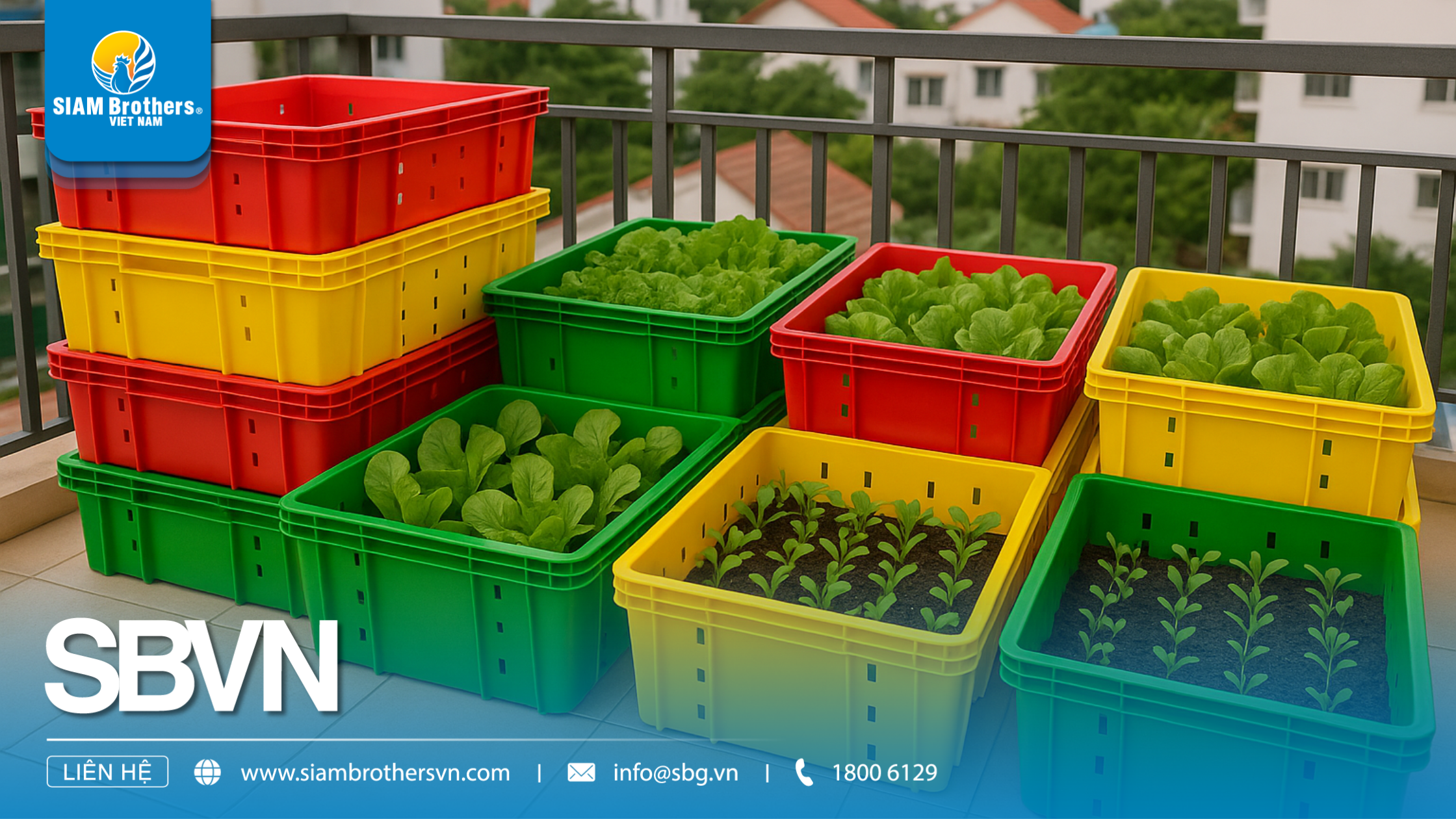
3.4 Easy to Relocate and Adjust Planting Positions
- Lightweight and easy to carry, trays can be moved based on sun exposure, rainfall, or greenhouse layout.
- They’re especially valuable in high-tech or semi-automated farming systems.
3.5 Reduce Pests and Prevent Root Entanglement
- Individual cell design minimizes disease transmission between plants.
- Roots grow vertically and remain separate, simplifying transplanting and avoiding root damage.
4. How to Use Plastic Seedling Trays Effectively
Step 1: Choose the Right Tray for Your Crop
- For leafy vegetables: choose trays with 128–200 cells
- For fruit trees or industrial crops: 50–72 cells
- Prioritize plastic seedling trays with drainage holes and solid dividers to support healthy root development.
Step 2: Prepare the Growing Medium
- Use clean, well-aerated, moisture-retentive media such as: tribat soil, coco peat, rice husk ash, or well-decomposed organic compost.
- Mix with Trichoderma fungus to suppress seedling diseases.
Step 3: Sow the Seeds
- Fill each tray cell with the growing medium without compacting it too tightly.
- Sow 1–2 seeds per cell depending on seed size.
- Cover with a thin layer of media and lightly mist with a spray nozzle.
Step 4: Care During Germination Phase
- Place trays in a well-ventilated, partially shaded area. In greenhouses, use shade nets or temporary covers.
- Water 1–2 times daily with a gentle spray to avoid displacing the medium.
- Monitor germination within 3–7 days, depending on plant type.
Step 5: Transplant Once Seedlings Are Ready
- When seedlings reach 5–10 cm in height with strong root systems, transplant to pots or open soil.
- Gently push the tray bottom or squeeze the cell walls to remove seedlings without damaging roots.
- Clean, dry, and store trays for reuse in the next sowing cycle.
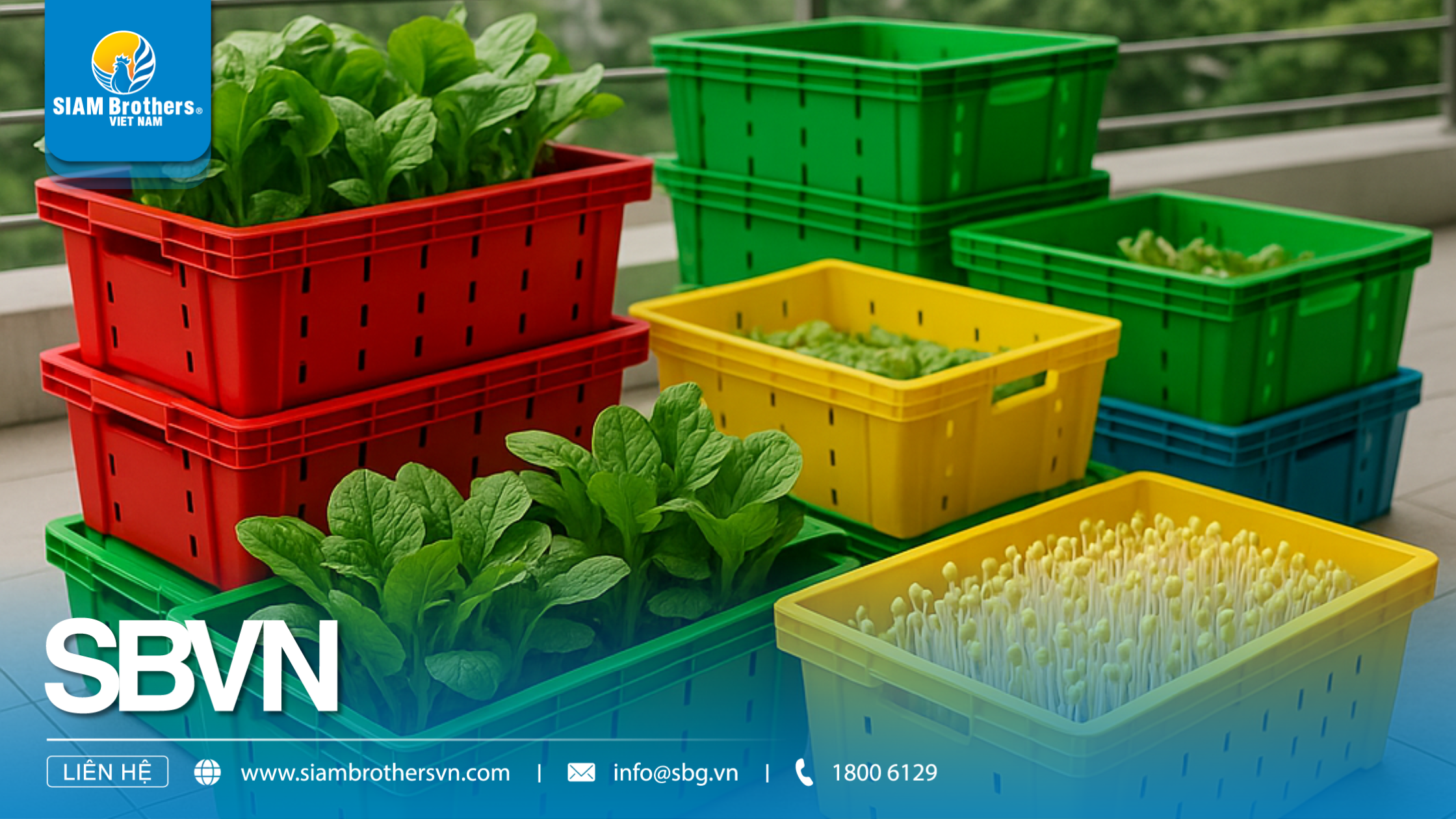
5. Frequently Asked Questions About Plastic Seedling Trays
5.1 How long can plastic seedling trays last?
- High-quality trays typically last 3 to 5 years with proper cleaning and storage.
- Virgin plastic trays are more durable than those made from recycled materials.
5.2 How many cells should a tray have for different crops?
- Leafy greens: 128–200 cells
- Fruit or industrial crops (e.g., coffee, pepper): 32–72 cells
- Choosing the correct tray size ensures balanced growth and easy transplanting.
5.3 Should I choose black or white plastic seedling trays?
- Black trays absorb heat well and accelerate germination.
- White or light-colored trays are better for high-temperature environments or greenhouse use, helping prevent root overheating.
5.4 Can trays be reused after each sowing cycle?
- Yes. Simply rinse with clean water or a Trichoderma solution to eliminate pathogens, then dry and store in a cool place.
- Reusing trays significantly reduces planting costs.
5.5 Where can I buy high-quality plastic seedling trays at good prices?
- You can find trays at agricultural supply stores, but it’s best to purchase from a trusted manufacturer.
- SIAM Brothers Vietnam provides plastic seedling trays made from virgin plastic with high durability, safety, and full technical support for growers.
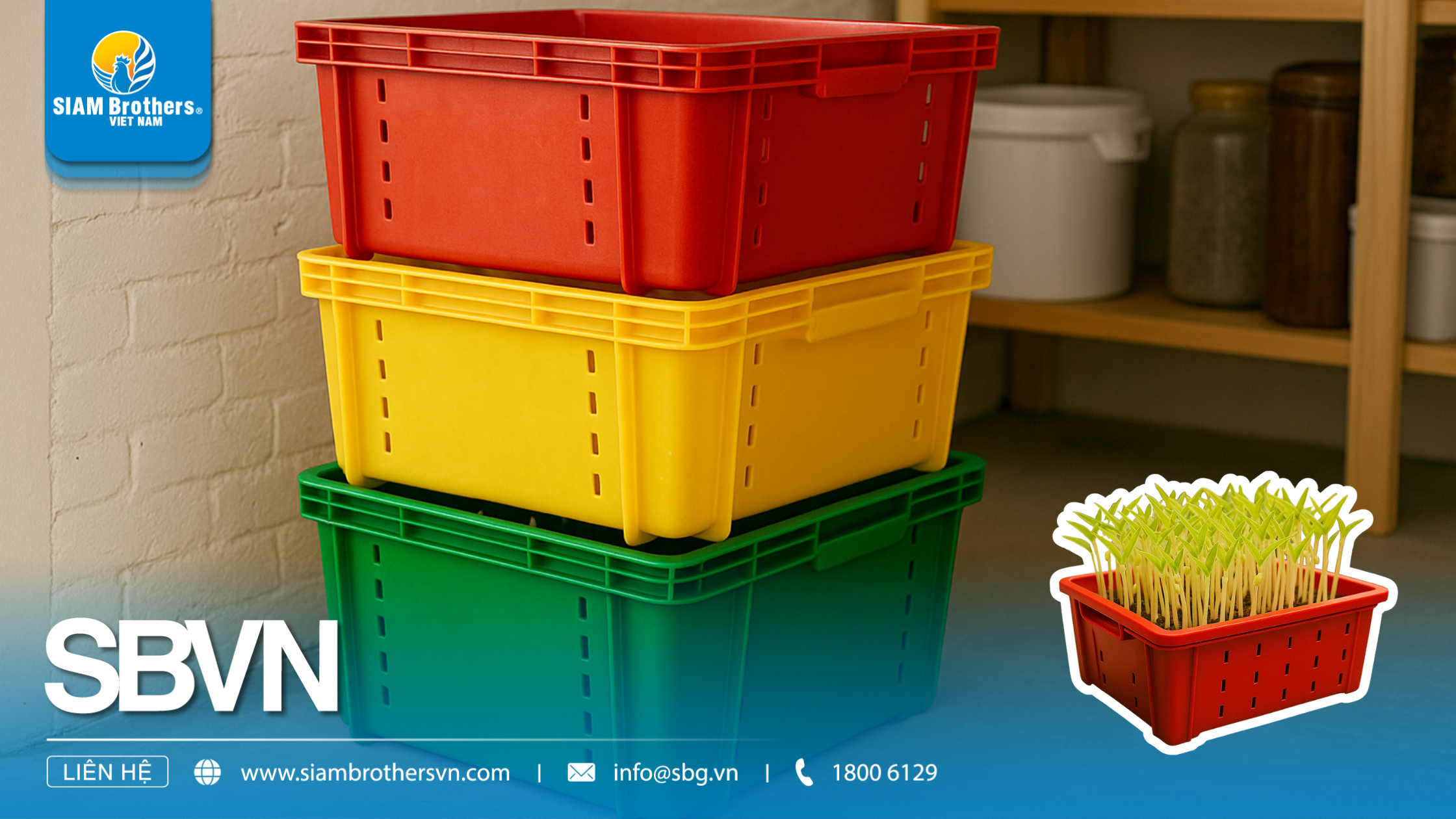
Plastic seedling trays are more than just containers—they’re a comprehensive growing solution that enhances germination rates, protects root systems, and reduces both labor and input costs. Choosing the right tray, understanding its structure, and applying the correct usage techniques will empower you to optimize seedling production, whether at home or on a professional farm.
Looking for durable, easy-to-use plastic seedling trays that work across modern farming models? SIAM Brothers Vietnam is your trusted partner for consistent performance every growing season. Contact us today for expert consultation and product support.
Nguồn: SIAM Brothers Việt Nam
Liên hệ với chúng tôi qua:
- Địa chỉ: Tầng 5 tòa nhà VRG Building, 177 Hai Bà Trưng, Quận 3, TP. Hồ Chí Minh, Việt Nam.
- Điện thoại: 028 39 912 889
- Hotline: 1800 6129 (miễn phí cước gọi)
- Facebook: fb.com/siambrothersvn
- Email: info@sbg.vn
- Youtube: youtube.com/@siambrothersvietnam1728
- X: x.com/sbvnjsc
- Zalo OA: zalo.me/1402339229697925373
- Ứng dụng SBVN ID:
- CHPlay: https://bit.ly/SBVNID-Android
- Appstore: https://bit.ly/SBVNID-iOS






